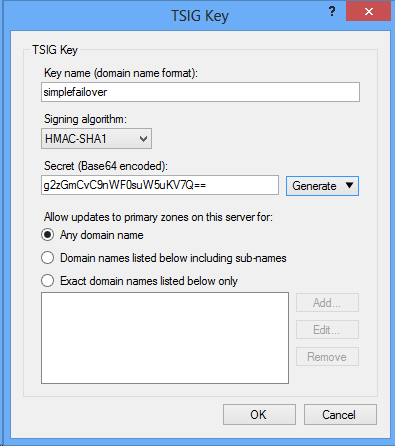

- #SET SERVER IP SIMPLE DNS PLUS HOW TO#
- #SET SERVER IP SIMPLE DNS PLUS INSTALL#
- #SET SERVER IP SIMPLE DNS PLUS UPDATE#
- #SET SERVER IP SIMPLE DNS PLUS WINDOWS#
The SOA identifies which server is authoritative for the zone. By default, your new zone will have two DNS records:.
#SET SERVER IP SIMPLE DNS PLUS UPDATE#
In production business networks, you'll want to enable this option so DNS clients can update their DNS records on their own. Accept the default, which is to disallow dynamic updates. This is a simple plain text file, actually. Choose primary here, and deselect the AD integration option (the AD integrated option is available only on AD DS domain controllers, by the way).

Options are primary, secondary, stub, and Active Directory-integrated. This launches the New Zone Wizard, which will ask us to specify the following information:
#SET SERVER IP SIMPLE DNS PLUS WINDOWS#
Creating a forward lookup zoneĪlthough you can configure a DNS server to do nothing but fulfill name resolution requests and cache the results, the primary work of a Windows DNS server is to host one or more lookup zones. For instance, to restart the local DNS server, run Restart-Service -Name DNS -Force. Of course, we use the native PowerShell *-Service cmdlets to operate on the server directly. In the following example, I use Set-DNSServer to migrate configuration data from server01 to server02: Get-DnsServer -CimSession 'server01' | Set-DnsServer -ComputerName 'server02' Use Get-DNSServer to retrieve the local server's configuration data.

Run the following command to retrieve a list of all 130-plus PowerShell DNS functions: Get-Command -Module DNSServer | Select-Object -Property Name

In the previous screenshot, you see the Advanced page from my DNS servers' Properties sheet.
#SET SERVER IP SIMPLE DNS PLUS INSTALL#
If you install the Remote Server Administration Tools (RSAT) tools on your administrative workstation, you'll get all the aforementioned DNS Server management utilities. Windows Server 2016 also includes the traditional Nslookup.exe and IPConfig.exe command-line tools.
#SET SERVER IP SIMPLE DNS PLUS HOW TO#
Read on to learn how to get a Windows Server 2016-based DNS server up and running on your devices running Windows 10. If you're a business owner looking to start a business website, you'll want to know how this all works on the back end. However, the Windows Server engineering team added some worthwhile enhancements, including DNS policies and Response Rate Limiting (RRL). The DNS server in Windows Server 2016 works the same basic way as it does in Windows Server 2012 R2.


 0 kommentar(er)
0 kommentar(er)
